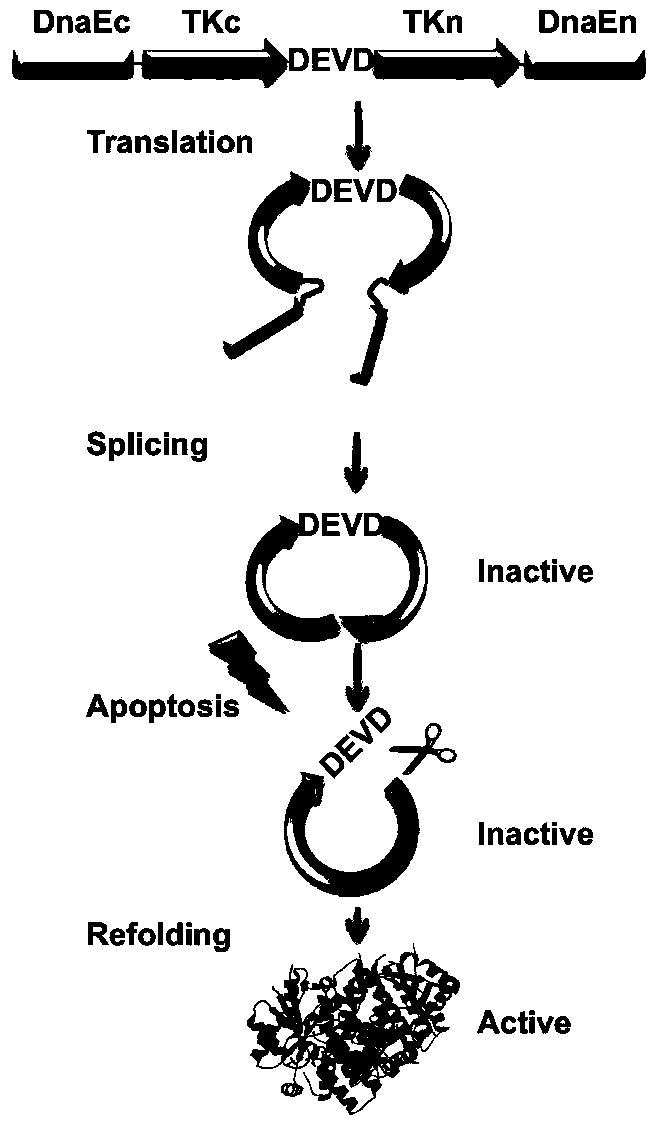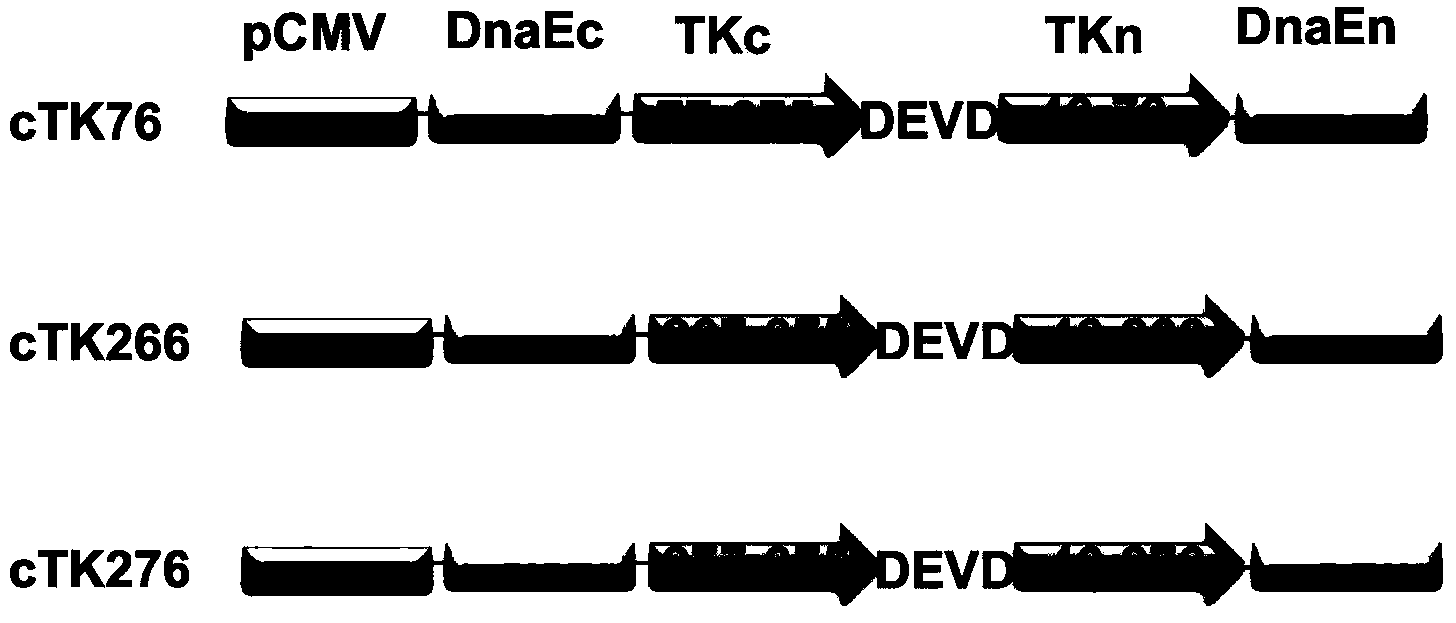HSV1-TK molecular imaging probe for detecting cell apoptosis as well as construction method and application thereof
A technology of HSV1-TK and molecular imaging, which is applied in the fields of biochemical equipment and methods, pharmaceutical formulations, microbial measurement/inspection, etc., and can solve the problems of low resolution, optical imaging penetration and tomographic resolution, application limitations, etc. question
- Summary
- Abstract
- Description
- Claims
- Application Information
AI Technical Summary
Problems solved by technology
Method used
Image
Examples
Embodiment 1
[0016] Embodiment 1 constructs HSV1-TK molecular image probe, figure 2 Shown:
[0017] 1. Linearized vector: pcDNA3.1 is digested with restriction endonucleases HindIII and XhoI, and the digested product is subjected to 1% agarose gel electrophoresis, and the target DNA fragment is excised under ultraviolet light. The target band was recovered and purified with a gel extraction kit.
[0018] 2. Get the insert fragment:
[0019] Obtaining the DEVD sequence: The DEVD sequence was synthesized from Shanghai Sangong Company using conventional chemical synthesis methods, and its sequence is 5'-gatgaagtcgac-3';
[0020] Obtaining TKn and TKc sequences: PCR amplified the N-terminal and C-terminal of HSV1-TK fragment respectively. In order to reduce the toxicity of TK in vivo, the first 45 amino acid sequences of its N-terminal were not amplified, but started from the 46th amino acid. After bioinformatics analysis, it is predicted that there are 3 potential sites, which can be int...
Embodiment 2
[0031] Example 2 Determination of Molecular Imaging Probe Activity During Apoptosis (see image 3 )
[0032] 1. To culture 22B tumor cells, take a 12-well culture dish and add a certain amount of 3x105 22B cells to culture at 37 degrees until about 70% confluence.
[0033] 2. Add 0.8ug of cTK76, cTK266 and cTK276 plasmid DNA respectively according to the instructions of Lipofectamine2000.
[0034] 3. After 24 hours of transfection, add 5ug / ml doxorubicin (Dox) to each well of cells to induce cell apoptosis.
[0035] 4. After 24 hours of induction, add 10uCi of radioactive substrate to each well of cells 18 After F-FHBG was cultured at 37 degrees for 1 hour, the culture medium was washed away, and then washed 3 times with PBS, and the cells in each well were lysed with 200ml of 0.1M NaOH.
[0036]5. Collect each well of cell lysate, calculate its radioactivity, expressed as % AD, and calculate the intracellular reaction of each probe 18 The relative change value of F-FHBG. ...
Embodiment 3
[0037] Determination of protein conformation of molecular imaging probes during apoptosis in Example 3 ( Figure 4 )
[0038] 1. To culture 22B tumor cells, take a 6-well culture dish, add a certain amount of 3x106 22B cells to 2 wells, and culture at 37 degrees to about 70% confluence.
[0039] 2. Add 1.6ug of cTK266 plasmid DNA according to the instructions of Lipofectamine2000.
[0040] 3. After 24 hours of transfection, add 5ug / ml doxorubicin (Dox) to one of the cells to induce apoptosis, and the other well without dox as a control.
[0041] 4. After 24 hours of induction, the cells were collected and detected by western blot with TK antibody. The result can be seen ( Figure 4 shown), when there is no dox induction (Dox is 0), the molecular probe is mainly cyclic TK band (cyclic TK) in the cell, but a slight linear TK band (linearTK) can also be seen, which means It is because the TK probe exists in the body mainly in the form of a ring-shaped protein structure before...
PUM
 Login to View More
Login to View More Abstract
Description
Claims
Application Information
 Login to View More
Login to View More - R&D
- Intellectual Property
- Life Sciences
- Materials
- Tech Scout
- Unparalleled Data Quality
- Higher Quality Content
- 60% Fewer Hallucinations
Browse by: Latest US Patents, China's latest patents, Technical Efficacy Thesaurus, Application Domain, Technology Topic, Popular Technical Reports.
© 2025 PatSnap. All rights reserved.Legal|Privacy policy|Modern Slavery Act Transparency Statement|Sitemap|About US| Contact US: help@patsnap.com



